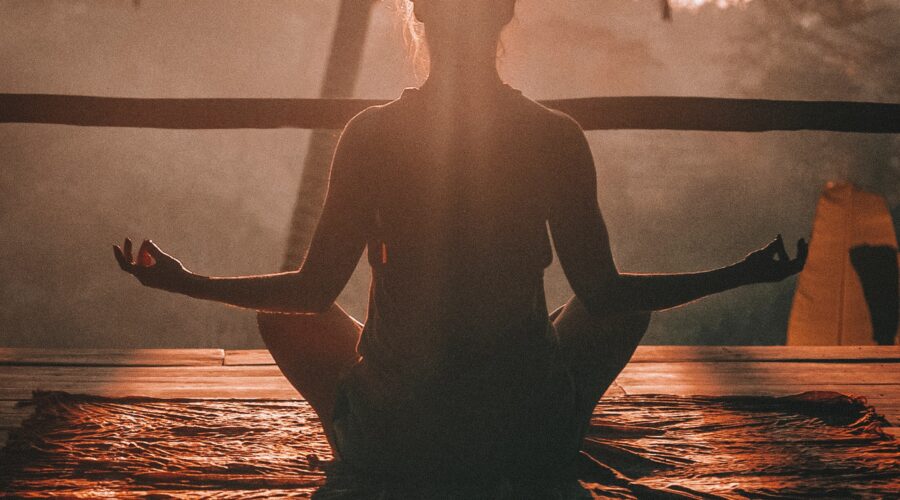The 8 limbs of Yoga
When I think of Yoga there’s truly so much that can go into sharing about the actual philosophy. I mean, yoga is a tradition with its origin in tantra that has roots dated back to India in the 9th and 11th centuries, just imagine how much history a practice like that can have! This article will give you an idea of the 7 limbs you don’t often hear about in the Western Workouts and how yoga can change your life.
This now highly westernized practice, was actually a way for practitioners to integrate their individual consciousness with universal consciousness, and was considered to be a complete path – meaning, it was a way to access divine truth from within, and it has all the tools carefully included. What a blessing, right!? Everyone knows that the asana practice of yoga will make you more flexible and, if you’re lucky, leaner. But there’s an additional 7 limbs that are also meant to bring you into inner harmony so that you can go out and shine your awesome into the world!
You might be wondering, “What is a complete path?” Well, yoga, as a science, has created a plan you can easily utilize to come into alignment with the soul’s truth of who you are. I like to think about the different limbs as a really beautiful road map to being an epic human and treating other humans with loving kindness.
The limbs are Yamas, Niyamas, Asana, Pranayama, Pratyhara, Dharana, Dyana, and Samadhi.
If you’re curious about embarking on the spiritual path of yoga, I highly recommend you read on to discover and feel into how adding all of these limbs into your physical yoga practice will serve your well being.
1: Namas – The Don’ts – by eliminating particular ways of acting you create fertile soil within yourself to embrace high qualities of being.
- Ahimsa – Do not Harm ( yourself, others, animals)
- Satya – Do not Lie (be honest!)
- Asteya – Do not Steal
- Brahmacharya – Do not Cheat (Think about this one as simply being in integrity with your sexuality)
- Aparigraha – Do not be possessive or jealous.
2. Niyamas – The Do’s – now that you’ve eliminated character flaws, you have space to embrace higher quality character traits. Trust me, you won’t complain once you see the benefits.
- Shaucha – Do stay pure and clear.
- Santosha – Do practice compassion and contentment for yourself & others
- Tapas – Do be committed to self-discipline
- Svadhyaya – Do practice self-reflection and introspection around your actions and speech.
- Ishvarapranidhana – Do study your Highest Self and the Unchanging Reality of All.
3. Asana – Now this is the physical practice that most Westerners know about. Asana means posture and the postures are methodical ways of moving your body to open up different energy meridians so that you create more vitality within. Yum! Notice though, that asana is the third limb, meaning it is important to get your mind and actions right while embarking on the physical journjey of yoga.
4. Pranayama – This is breath-work. Prana is life-force and so this translates roughly to ‘breath-control.’ When you can control your breath, you can control your state of mind. Deeper breaths lead to feeling relaxed; short and choppy breaths lead to anxiety. Notice how you’re breathing now and perhaps give yourself a deep breath and a sigh as you settle into your seat? Feels good, eh?\
5. Pratyahara – This is the practice of bringing your awareness within yourself by releasing the external world and the senses. Through meditation you find inner freedom because you’re gifted the ability to respond, rather than react, to external forces.
6. Dharana – This is focus. Dharana translates to keeping a fixed mind and is often done through using a mantra or sensation of the breath moving or fingers touching one another. Highly utilized by Swami Vivikinanda, this practice of Dharana is great for keeping your mind focused on positivity or your desired outcome. Imagine being able to focus for longer and longer periods of time on the things you truly desire? And then, to finally fine timelessness doing what you love. Here you are focused on one topic at a time.
7. Dyana – Dharana and Dyana are actually connected and lead one to the other. In Dyana, you start to contemplate on one thing – for example, instead of focusing on your body, now you are simply contemplating the breath and how it moves, rather than the sensation of being in your body.
8. Samadhi – Oneness. Here your mind, your body, and what you are focused on all fuses together to find Peace. This state of being brings about harmony and what I like to call – the warm fuzzies! When you can align your mind, body, and spirit to be all together in the same Now moment, anything is truly possible.
Yoga is a sanskrit word that translates into english as, “to unite,” so when a person embarks on a path of spirituality it is often that yoga is one of the first practices they start to dabble in. This is because it is literally uniting your spirit within the temple of your body.
I hope that you learned a lot (or at least something new!) about the full practice of Yoga. For me, getting on my yoga mat gave me a place to start to observe myself in a healthy way, so that I could make little changes to how I was speaking to myself, or feeling about my body. Now, I feel so much more comfortable in my skin! I treat myself like a sacred temple, and I can extend that kindness and caring to others because I know we are all One and we are all going through our own Human Journey of awakening.
I hope you’ll enjoy one of the many amazing yoga classes you can find on Only Tulum! Definitely let us know how the class goes, and please keep us posted how your personal yoga practice grows and gently changes your life.
Namaste, yogis!
Namaste means “The Light and Love within me, Honors the Light and Love within you!”



